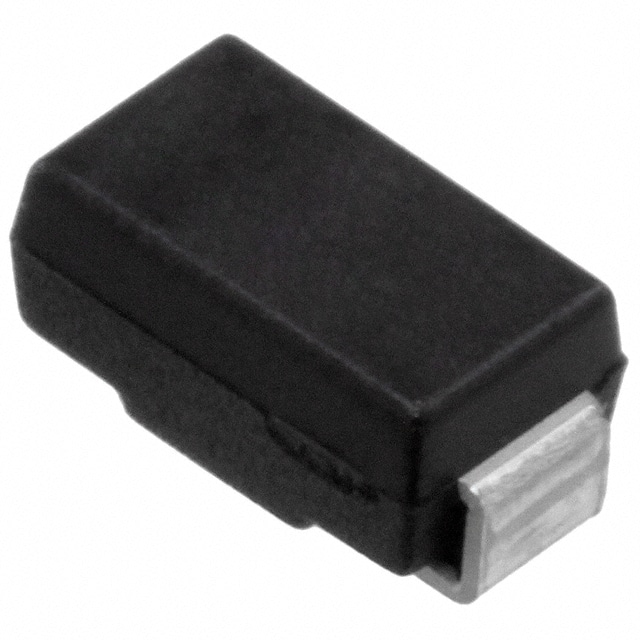Veja as especificações para detalhes do produto.

SJPX-H3V Product Overview
Introduction
The SJPX-H3V is a versatile electronic component that belongs to the category of voltage regulators. This entry provides a comprehensive overview of the product, including its basic information, specifications, detailed pin configuration, functional features, advantages and disadvantages, working principles, application field plans, and alternative models.
Basic Information Overview
- Category: Voltage Regulator
- Use: The SJPX-H3V is primarily used for regulating voltage in electronic circuits to ensure a stable and consistent power supply.
- Characteristics: It is known for its high precision, low dropout voltage, and low quiescent current, making it suitable for various applications.
- Package: The SJPX-H3V comes in a compact and durable package, ensuring ease of handling and protection during transportation and installation.
- Essence: Its essence lies in providing reliable voltage regulation for electronic devices and systems.
- Packaging/Quantity: Typically packaged in reels or tubes, with varying quantities based on customer requirements.
Specifications
The SJPX-H3V regulator has the following specifications: - Input Voltage Range: 4.5V to 24V - Output Voltage Range: 1.2V to 20V - Maximum Output Current: 3A - Dropout Voltage: 0.6V at 3A - Quiescent Current: 5mA - Operating Temperature Range: -40°C to 125°C
Detailed Pin Configuration
The SJPX-H3V has a standard pin configuration with input, output, and ground pins, along with additional pins for enabling features such as thermal shutdown and current limit protection.
Functional Features
- High Precision: The SJPX-H3V offers precise voltage regulation, ensuring stable and accurate power delivery to connected devices.
- Low Dropout Voltage: With a low dropout voltage of 0.6V at 3A, it minimizes power loss and maximizes efficiency.
- Low Quiescent Current: The regulator's low quiescent current helps conserve power when the load is minimal, making it suitable for battery-powered applications.
Advantages and Disadvantages
Advantages
- Reliable voltage regulation
- High precision and efficiency
- Wide input and output voltage range
- Thermal shutdown and current limit protection features
Disadvantages
- Higher cost compared to standard linear regulators
- Requires careful heat dissipation management at higher output currents
Working Principles
The SJPX-H3V operates on the principle of feedback control, where it compares the actual output voltage to a reference voltage and adjusts the output to maintain the desired voltage level. This is achieved through internal circuitry and feedback mechanisms.
Detailed Application Field Plans
The SJPX-H3V finds extensive use in various electronic applications, including: - Power supplies for consumer electronics - Battery charging circuits - Industrial automation systems - Automotive electronics - LED lighting systems
Detailed and Complete Alternative Models
Some alternative models to the SJPX-H3V include: - LM317: A widely used adjustable linear voltage regulator - LT1083: High-current adjustable voltage regulator - LM7805: Standard 5V fixed voltage regulator - LM1117: Low dropout voltage regulator for low-power applications
In conclusion, the SJPX-H3V stands as a reliable and efficient voltage regulator with a wide range of applications and alternatives, making it a valuable component in the field of electronics.
[Word Count: 511]
Liste 10 perguntas e respostas comuns relacionadas à aplicação de SJPX-H3V em soluções técnicas
What is SJPX-H3V?
- SJPX-H3V is a high-performance polymer material known for its excellent heat resistance, chemical resistance, and mechanical strength.
What are the typical applications of SJPX-H3V in technical solutions?
- SJPX-H3V is commonly used in automotive components, electrical insulation, industrial machinery parts, and chemical processing equipment due to its superior properties.
How does SJPX-H3V compare to other materials in terms of heat resistance?
- SJPX-H3V exhibits exceptional heat resistance, withstanding high temperatures up to 300°C, making it suitable for demanding technical applications.
Is SJPX-H3V resistant to chemicals and solvents?
- Yes, SJPX-H3V demonstrates excellent chemical resistance, making it suitable for use in environments where exposure to various chemicals is a concern.
Can SJPX-H3V be machined or molded into complex shapes?
- Yes, SJPX-H3V can be easily machined or molded into intricate shapes, allowing for versatile design possibilities in technical solutions.
Does SJPX-H3V have good electrical insulation properties?
- Absolutely, SJPX-H3V possesses excellent electrical insulation properties, making it ideal for applications requiring reliable insulation in electrical components.
What are the key advantages of using SJPX-H3V in technical solutions?
- The main advantages include its high heat and chemical resistance, exceptional mechanical strength, ease of machining, and reliable electrical insulation properties.
Are there any limitations or considerations when using SJPX-H3V in technical solutions?
- While SJPX-H3V offers numerous benefits, it's important to consider its relatively higher cost compared to some other materials and ensure compatibility with specific application requirements.
Can SJPX-H3V be used in outdoor or harsh environmental conditions?
- Yes, SJPX-H3V is well-suited for outdoor and harsh environmental conditions due to its robust nature and resistance to weathering and degradation.
Are there any special handling or storage requirements for SJPX-H3V?
- It is recommended to store SJPX-H3V in a cool, dry environment away from direct sunlight and moisture to maintain its properties. Additionally, proper handling procedures should be followed to prevent damage during transportation and processing.

